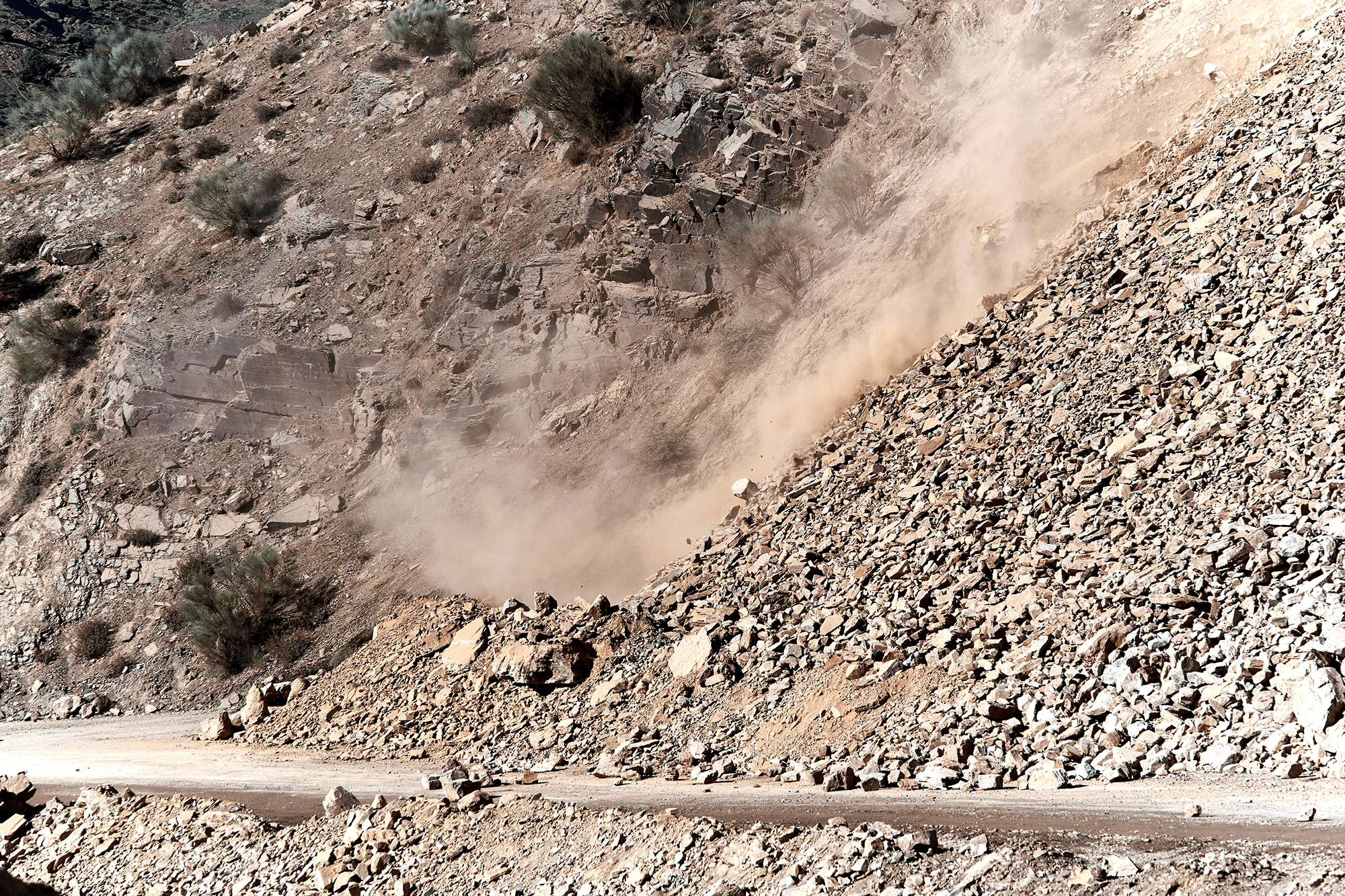Knowing what speed a landslide will reach helps us predict how much damage they can cause. That speed depends on many factors: the steepness of the terrain, the sliding distance, the thickness of the flowing layer, and the type of grains making up the flow. Researchers found that predictions from previous studies often underestimated the speeds reached by thicker flows. Through laboratory experiments with grains of different shapes, a team found that those models mistakenly assumed a fully-developed flow — in other words, one where the grains have reached a constant final speed. While spherical grains reach that state over a short sliding distance, that’s not the case for other grains.
Instead, the team used their results to build a new predictive model for landslide speeds. This one still depends on incline angle and flow thickness, but it also uses a dynamical friction coefficient to describe the granular material and capture how the flow’s speed varies with distance down the incline. (Image credit: W. Hasselmann; research credit: Y. Wu et al.; via APS News)














